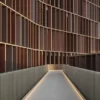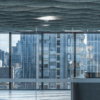The best discounts this week
Every week you can find the best discounts here.
Soundproofing Apartment Walls: Effective Techniques for Noise Reduction
Soundproofing Apartment Walls: Effective Techniques for Noise Reduction
Living in an apartment offers convenience and often a vibrant community atmosphere. However, the close proximity to neighbors can sometimes lead to unwanted noise disruptions. Whether it’s the rhythmic thump of bass from the unit below, the constant chatter from next door, or the early morning sounds of bustling hallways, excessive noise can significantly impact your quality of life. Fortunately, there are effective soundproofing strategies you can employ to create a more peaceful and tranquil living environment. This guide will delve into practical techniques for soundproofing your apartment walls, focusing on solutions that are both effective and often within a renter’s capabilities.
Understanding Sound Transmission
Before diving into solutions, understanding how sound travels is crucial. Sound waves don’t simply stop at a wall; they transfer their energy through various means, including: airborne sound (conversation, music), impact sound (footsteps, dropped objects), and flanking transmission (sound traveling through gaps and cracks around windows and doors). Effectively soundproofing requires addressing all these transmission paths.
Tackling Airborne Noise: Absorption and Isolation
Airborne noise is the most common culprit in apartment sound issues. Two primary techniques combat this: sound absorption and sound isolation.
Sound Absorption: Softening the Sound Waves
Absorptive materials trap sound waves, preventing them from bouncing around the room and amplifying the noise. Effective absorptive materials for apartment walls include:
- Acoustic panels: These are readily available in various sizes, colors, and thicknesses and can be affixed directly to the walls.
- Thick curtains and tapestries: Heavy, fabric-based treatments can effectively absorb sound, especially in the higher frequency ranges.
- Area rugs: Rugs not only absorb sound but also dampen impact noise from foot traffic.
- Bookshelves filled with books: A surprisingly effective sound absorber, especially when densely packed.
Sound Isolation: Blocking Sound Transmission
Sound isolation prevents sound waves from passing through the wall in the first place. While completely soundproofing a wall within an apartment is usually impractical for renters, you can improve sound isolation by adding layers of dense material:
- Mass-loaded vinyl (MLV): A dense, flexible material that effectively blocks sound transmission when applied to the wall.
- Adding a second layer of drywall: This creates a more resilient barrier to sound waves, particularly when combined with resilient channels or clips. Note: this requires drilling into the wall, which may not be permitted in all rentals.
Addressing Impact Noise: Damping Vibrations
Impact noise, like footsteps, requires different solutions. Focusing on damping vibrations is key:
- Area rugs and carpets: As mentioned earlier, these help absorb and dampen impact noise significantly.
- Underlayment for flooring: Adding a dense underlayment under your existing flooring can dramatically reduce impact noise transfer.
Sealing Gaps and Cracks: Preventing Flanking Transmission
Even with effective absorption and isolation, sound can easily travel through gaps and cracks around windows, doors, and electrical outlets. Careful sealing is essential:
- Weatherstripping: Apply weatherstripping around doors and windows to seal any gaps.
- Acoustic sealant: Fill any cracks or gaps in walls with acoustic sealant to block sound transmission.
Choosing the Right Soundproofing Solution for Your Apartment
The best approach depends on your budget, the type of noise you’re trying to reduce, and the restrictions of your rental agreement. Starting with absorptive materials is often the easiest and most cost-effective first step. If you need more significant sound reduction, consider adding layers of isolation materials, but always check with your landlord before making any permanent modifications to your apartment.
Conclusion: Creating a Peaceful Apartment Oasis
Soundproofing your apartment walls doesn’t have to be a daunting task. By understanding how sound travels and applying the appropriate techniques, you can significantly improve your living environment and create a peaceful oasis, even within a bustling apartment complex. Remember to always prioritize solutions that are both effective and compatible with your rental agreement. For more advanced projects or for tailored advice for your specific situation, consider consulting with a professional acoustician.





